Temple Beth Israel
Religious Life
From 1860 to 1920, Jewish settlers were finding opportunities in mining, farming, banking, and politics in the Phoenix area. At this time synagogues, trained rabbis and Kosher foods were hard to find in Arizona. For many Jewish families, this meant a modification in their practices to fit their new lifestyles.
The first formal congregation was established by Barnett Marks, where he held services and organized Jewish education at the local saloon. By 1918, the congregation called themselves “Emanuel,” but later after their incorporation in 1920, took the name Beth Israel. That same year, a dinner was sponsored by the B’nai B’rith Lodge to raise money for the construction of a temple. The dinner raised $14,000 and Lescher, Kibbey and Mahoney constructed the new facility near Central Avenue and Culver Street, in downtown Phoenix. On October 31, 1921 construction began with 38 families as its congregation.
By 1930, the congregation was becoming divided over the hiring of a Shochet (Kosher butcher) and the hiring of a Reform or Conservative rabbi. The traditional Jewish members left to form Beth El Congregation, affiliated with Conservative Judaism. In 1935, Rabbi Jaffa would become the first reform rabbi to join Congregation Beth Israel. He was succeeded by Rabbi A. L. Krohn in 1938.
Portrait of A.L. Krohn. Provided by the Arizona State Library.
Temple Beth Israel on the corner of Culver Street - today’s Arizona Jewish History Society.
After outgrowing the original Temple Beth Israel, the congregation moved to a new building on Eleventh and Flower Street in 1949
Rabbi Abraham Lincoln Krohn
Rabbi Abraham Lincoln Krohn became Beth Israel’s Rabbi in 1938. During World War II, Krohn and the congregation provided religious services for those stationed at Luke Air Force Base. Along with the services the congregation, hosted a number of dances and balls for the military personnel there.
When Krohn stepped down from Beth Israel in 1955, he took on the responsibilities of helping the new Beth Hebrew Congregation gain its foundations in Phoenix. Even during his ailing health, Krohn stayed active in the community by participating in nearly every new structure or facility being built in the Valley, including Kivel, Phoenix JCC, and others. He passed away in 1958.
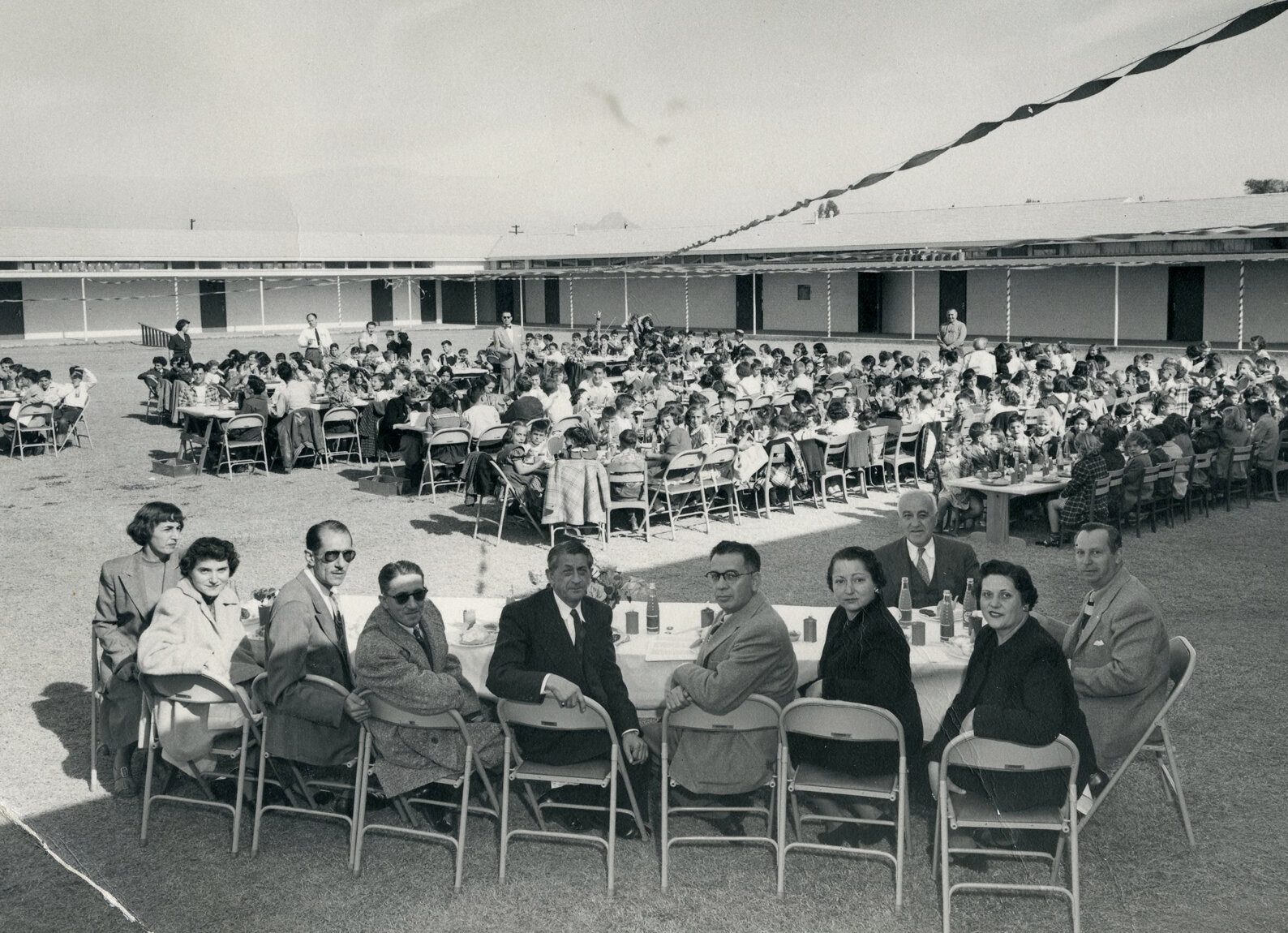

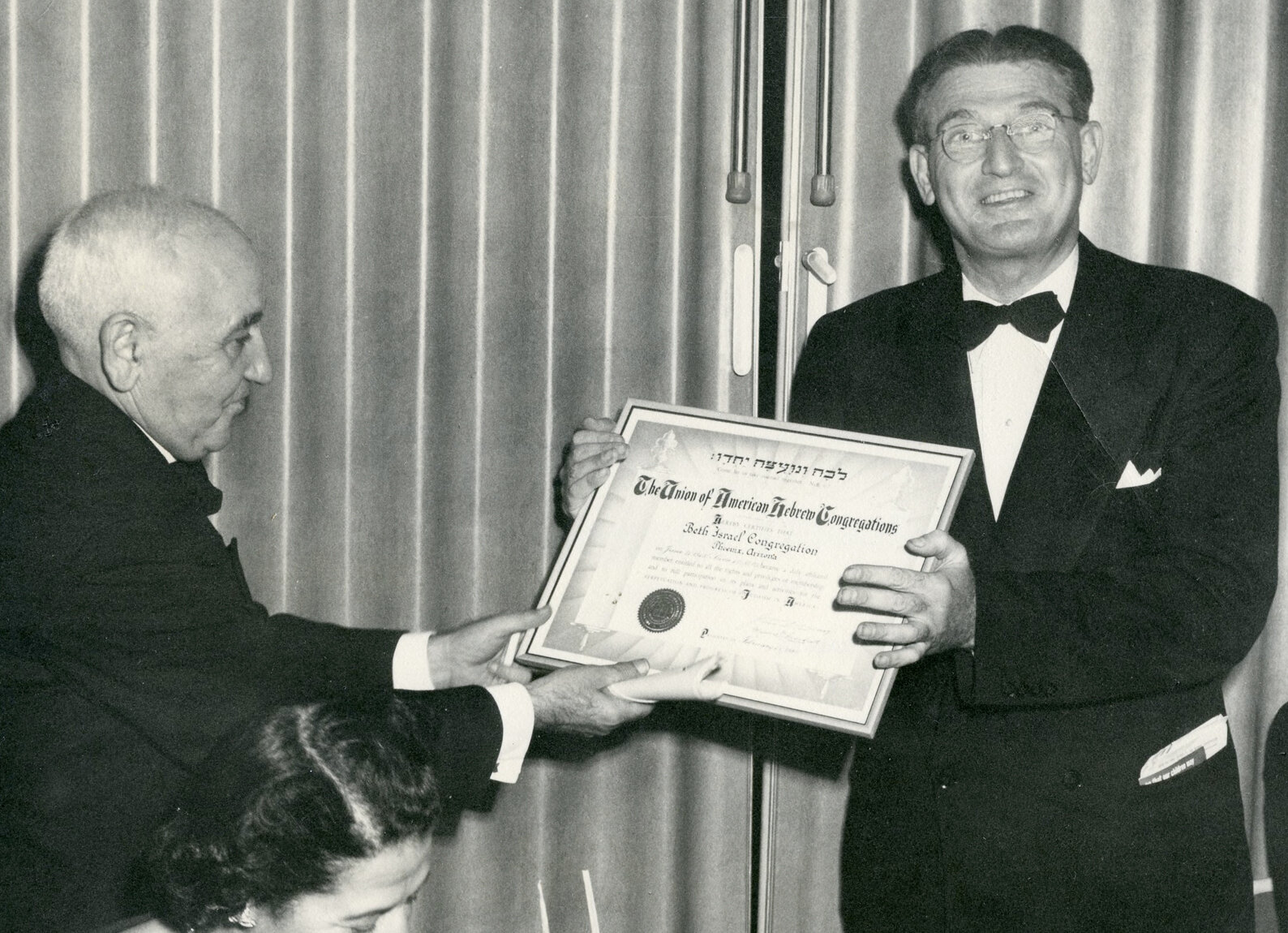

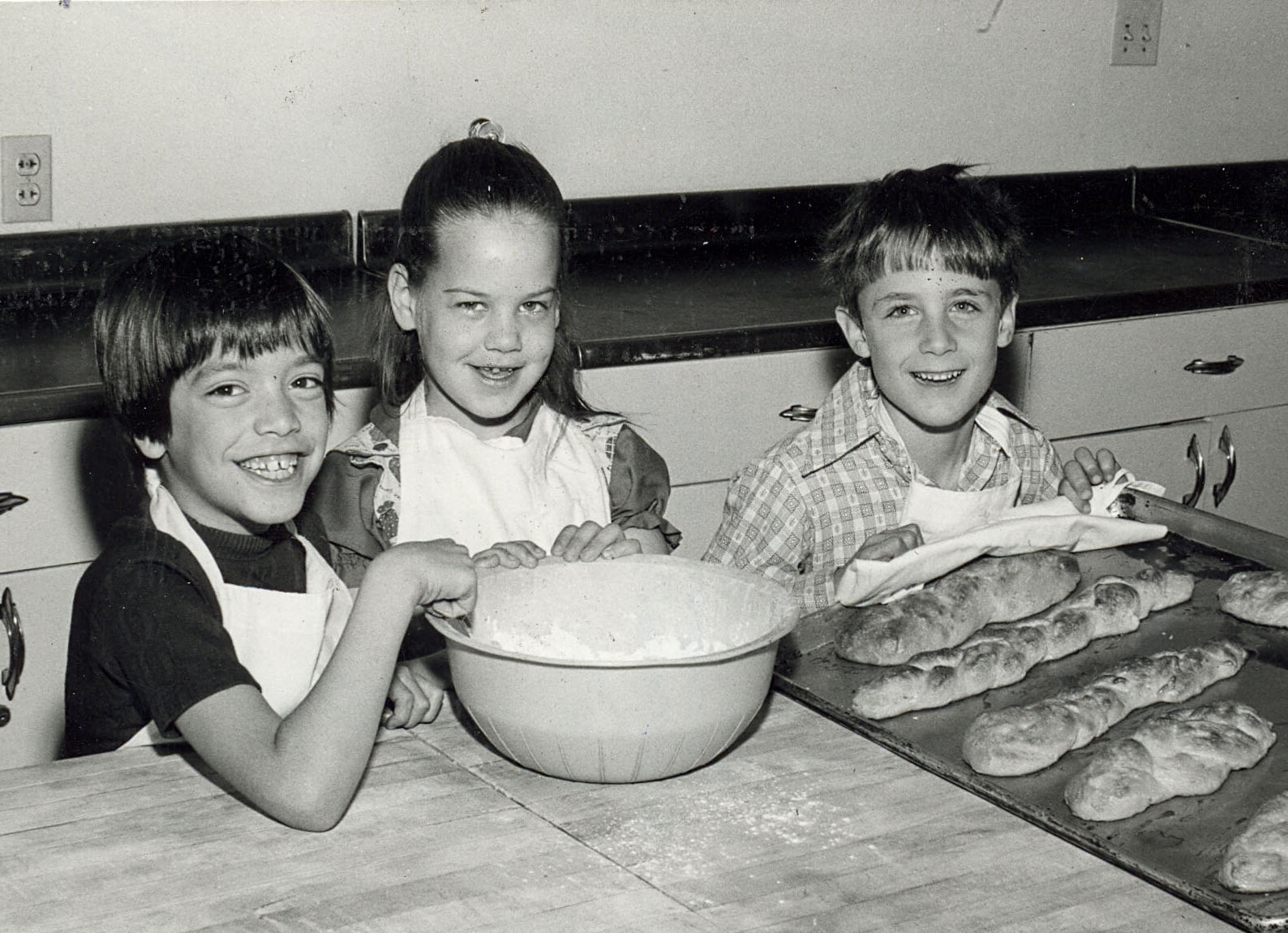
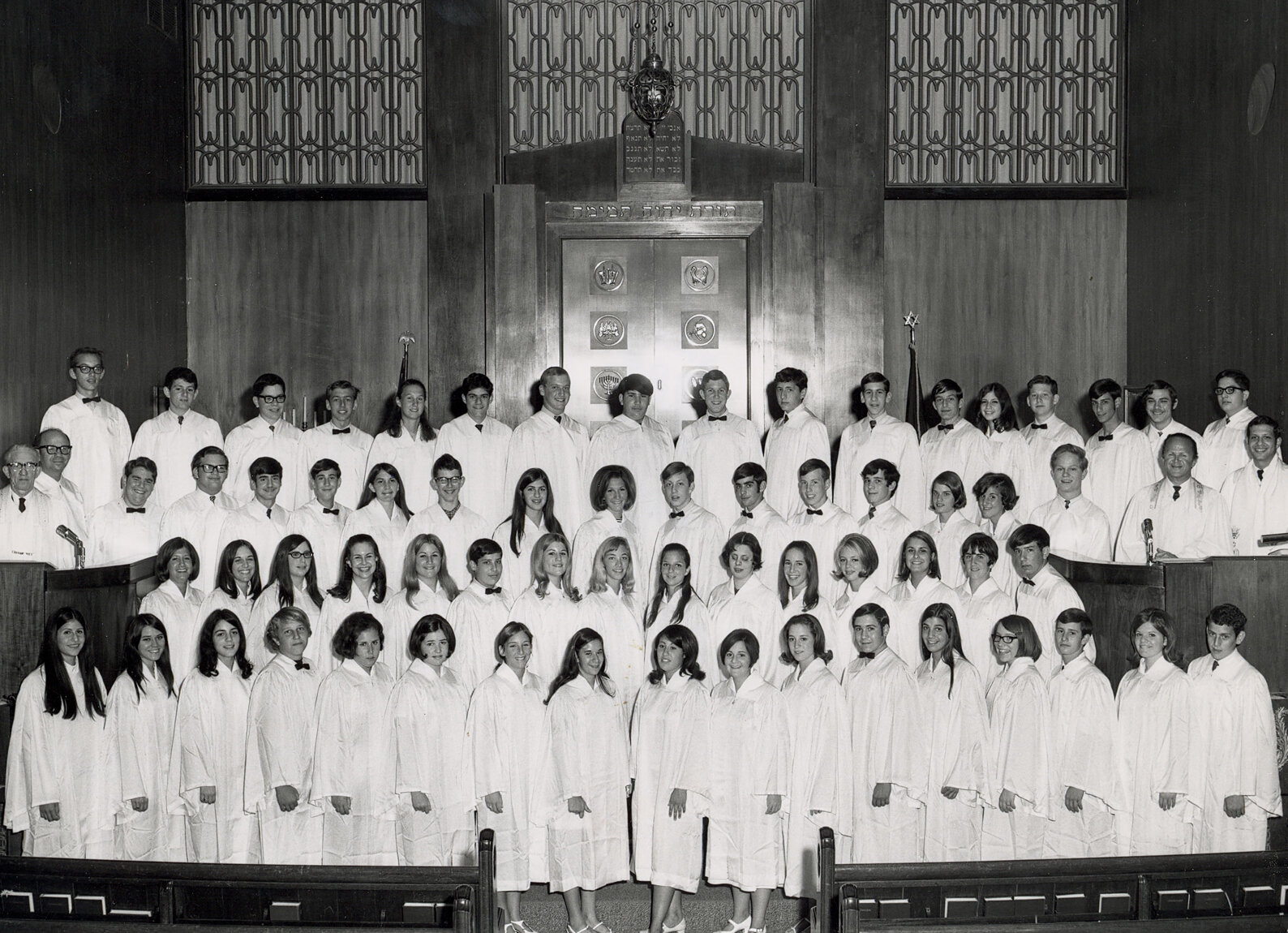
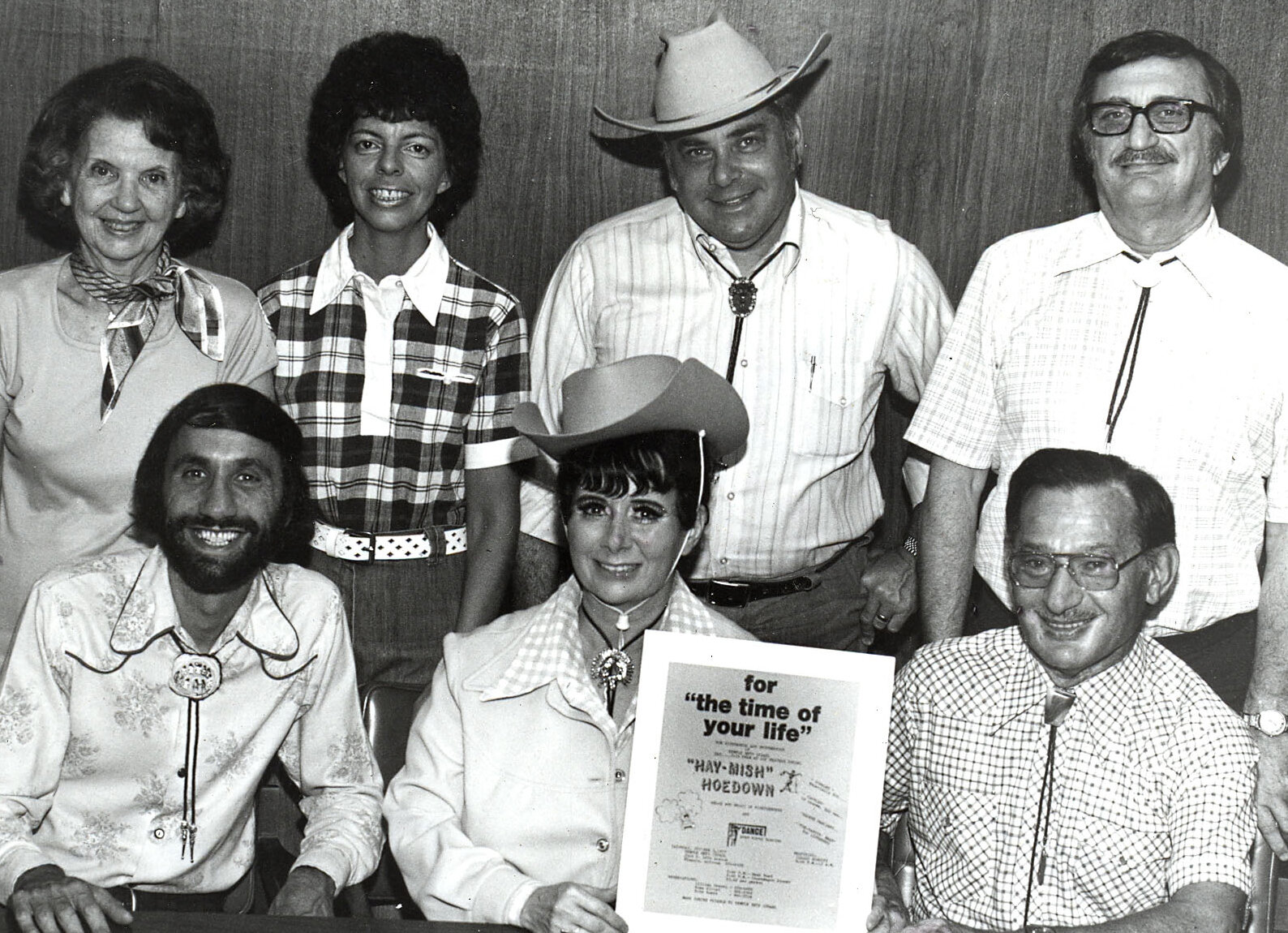
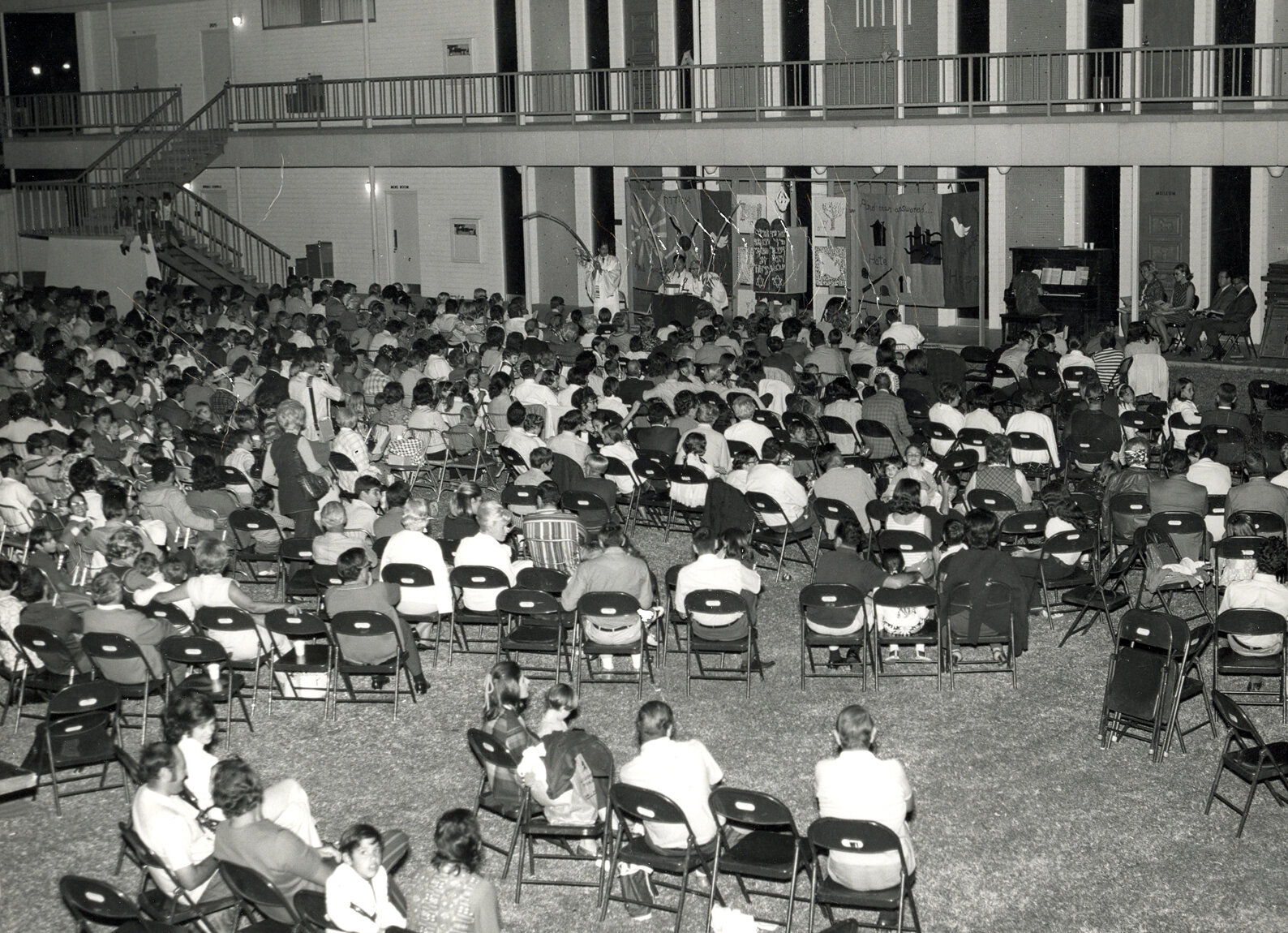
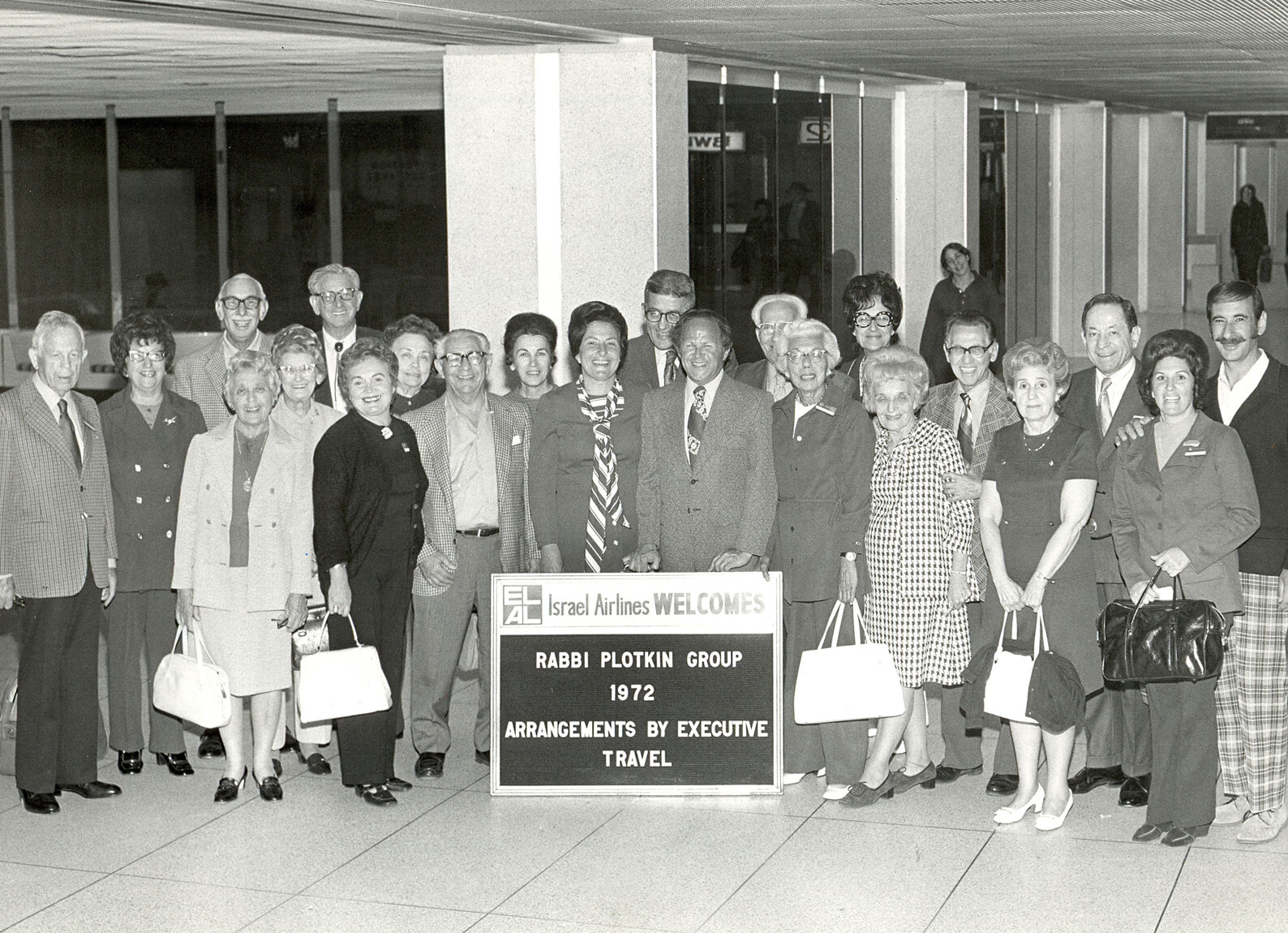
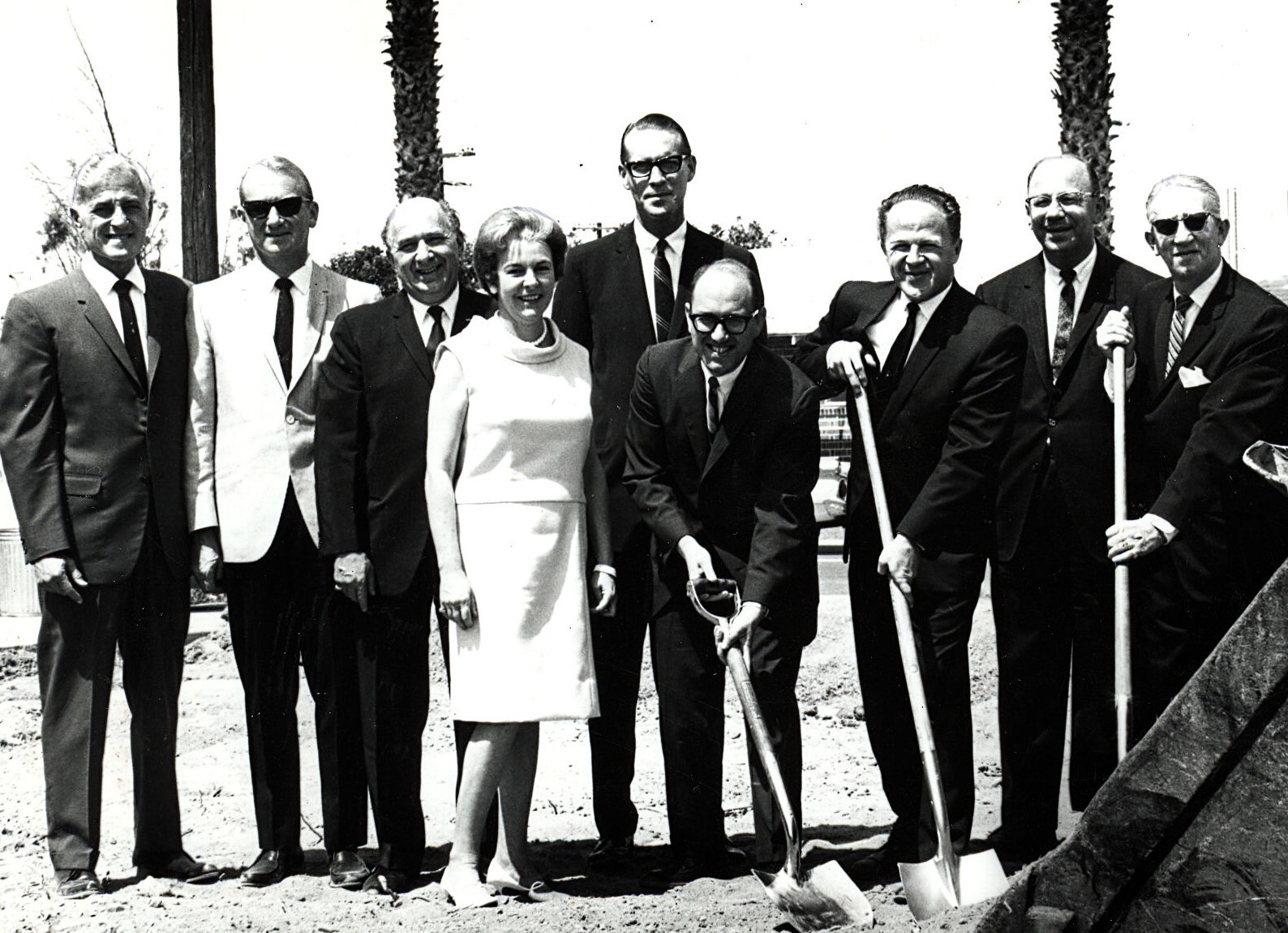
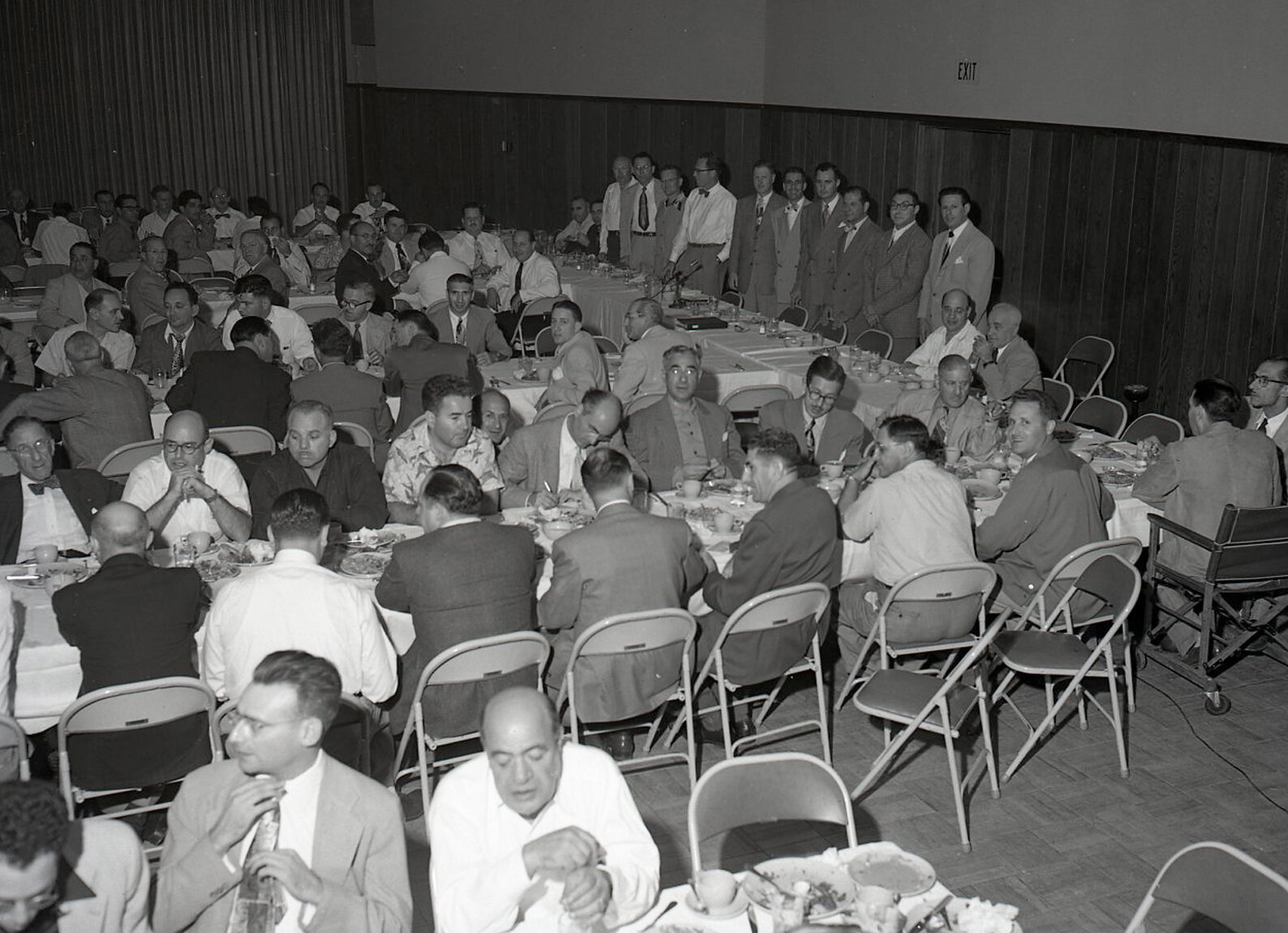

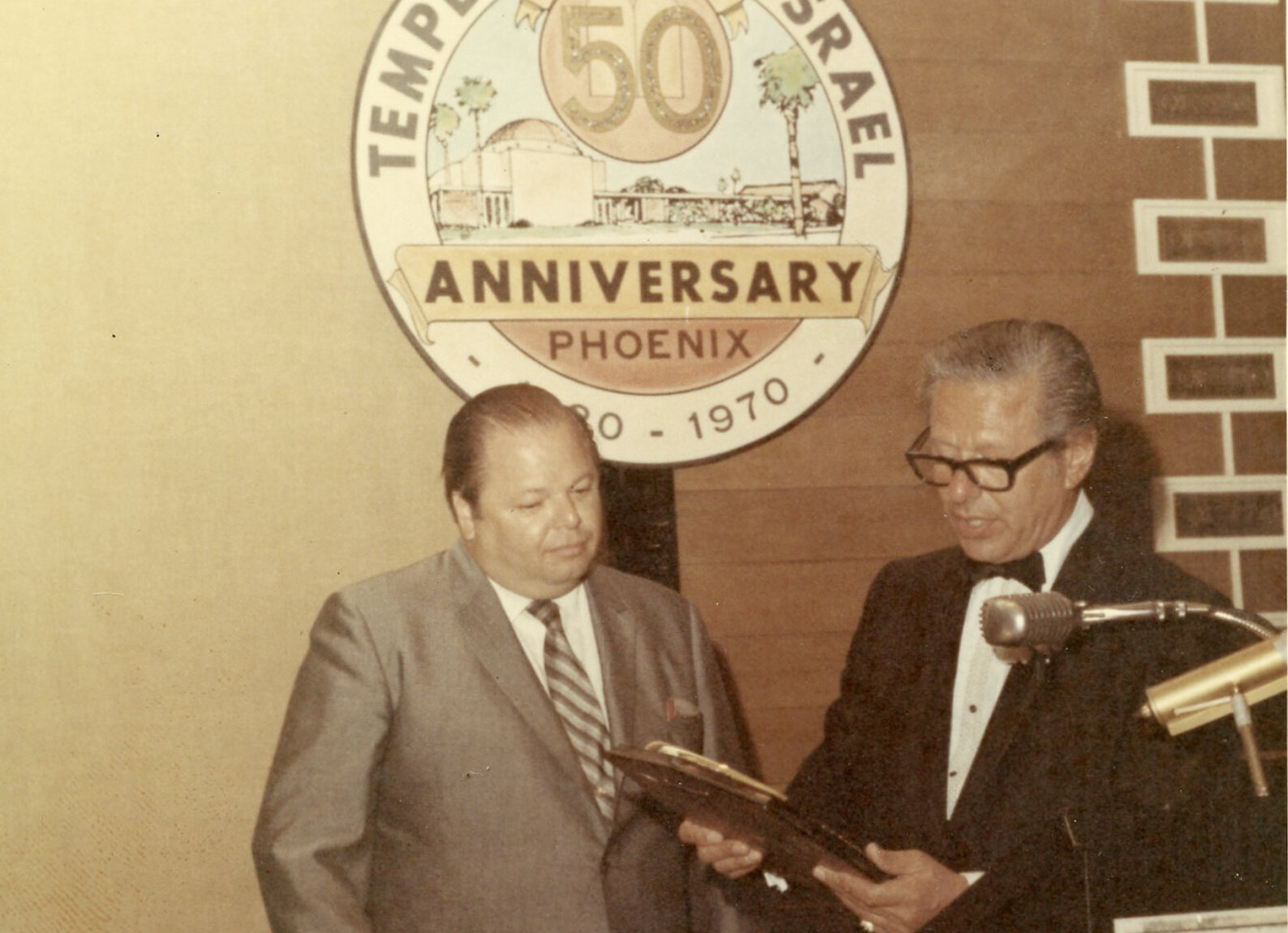
Growth and Transformation
By the end of World War II there was an influx to Phoenix’s population. People were moving West for the warmer weather and the new opportunities that presented themselves. Temple Beth Israel saw its congregation increase from 100 to around 200 families, which meant that its current location on Culver Street was no longer large enough. Under the guidance of Rabbi Krohn, the congregation built a new temple on Tenth and Flower Avenues in 1949. Following years of ailing health, Rabbi Krohn stepped down and was succeeded by Rabbi Albert Plotkin in 1955.
CLICK HERE: Program of the consecration ceremony of Temple Beth Israel new building on 3310 North 10th Ave. in 1949
DOWNLOAD: Temple Beth Israel Religious School, Parents' Manual, 1957-1958
Prominent members of the Phoenix Jewish community gather for the dedication of the Temple Beth Israel (now Congregation Beth Israel) building in 1950. Pictured from left to right are: (top row) Nat Silverman, Nelson Glueck, Archie Kroloff, and (bottom row) Charles Korrick, Rabbi A.L. Krohn of Temple Beth Israel, Harold Diamond and Al Spector.
Joyce and Arville Yancher, Ralph and Rita Segal, and Bill and Maxine Saulson, members of Temple Beth Israel's Sisterhood and Brotherhood, enjoy the "Let's Make A Deal," dinner dance at the temple
With Rabbi Plotkin’s leadership, the congregation grew in numbers and notoriety. Being an advocate for Civil Rights, as well as a supporter of the arts and the State of Israel, Rabbi Plotkin and Beth Israel became well known in the Phoenix area. Beth Israel added the Sylvia Plotkin Judaica Museum in 1967 becoming one of the most extensive and impressive synagogue museums in the United States.
Today, Temple Beth Israel is now known as Congregation Beth Israel and moved to its current location on North 56th Street and Shea Boulevard in 1997.
Rabbi Albert Plotkin
Phoenix area Rabbis ca. 1969
From left: Michael Haskes, Rabbi Maurice Corson, Rabbi Moshe Tutnauer, Rabbi Abraham Rosenblum, Rabbi Phillip Jaffa, Rabbi Albert Plotkin.
Did You Know?
The Mantel (Torah Covering) covers the Torah scroll, dressing it before returning it back to the Ark. It is an ornate covering that both protects and beautifies the Torah scroll, typically made of velvet and embroidered with thread, silk and beads. The Torah coverings are opened at the bottom and pierced with two openings at the top so that the atzei chaim, (Torah staves) can protrude.
The Keter (Torah Crown) rests atop the Torah and serves as a symbol of Jewish endearment and reverence.
Torah Mantel
Beth Israel Dedication in 1948- exact torah can be seen in the picture to the left.
Torah Keter
Sources: *https://www.youtube.com/watch?v=3CIh4GEnwCw, ArizonaInterfaithMovement, https://cbiaz.org
Unless credited with prior ownership and copyright - all displayed imagery, documents, brochures, books, materials, recordings, video, broadcasts, and promotional materials of every form and description, whether in written, analog, digital, film or electronic form, prepared by Arizona Jewish Historical Society shall remain the copyrighted property works of Arizona Jewish Historical Society. Any unauthorized use of that information or materials may violate copyright, trademark and other laws. Any rights not expressly granted are reserved.
AZJHS is deeply grateful to all our donors and sponsors for their generous support and gifts throughout the year. Because of you, we are able to continue providing to the public at no cost our many programs, events and exhibits.
Mid Century Exhibit Key
(Please choose from the links below to enter the exhibit room of your choice.)
Exhibit Entrance
Featurette
Social Life in Phoenix
Community Enrichment
Religious Life
Jewish Engagement in Civil Rights
Activities Corner
If you have Mid-Century Photos or Documents from 1945-1975 and would like to add to our photographic and informational collection, please fill out the below and submit. Our Special Collections Curator will be in contact with you. Thank you.
In 1997, Congregation Beth Israel moved to its current location on North 56th Street and Shea Boulevard in Scottsdale
CLICK HERE: CONGREGATION BETH ISRAEL
10460 N 56th St, Paradise Valley, AZ 85253
(480) 951-0323











